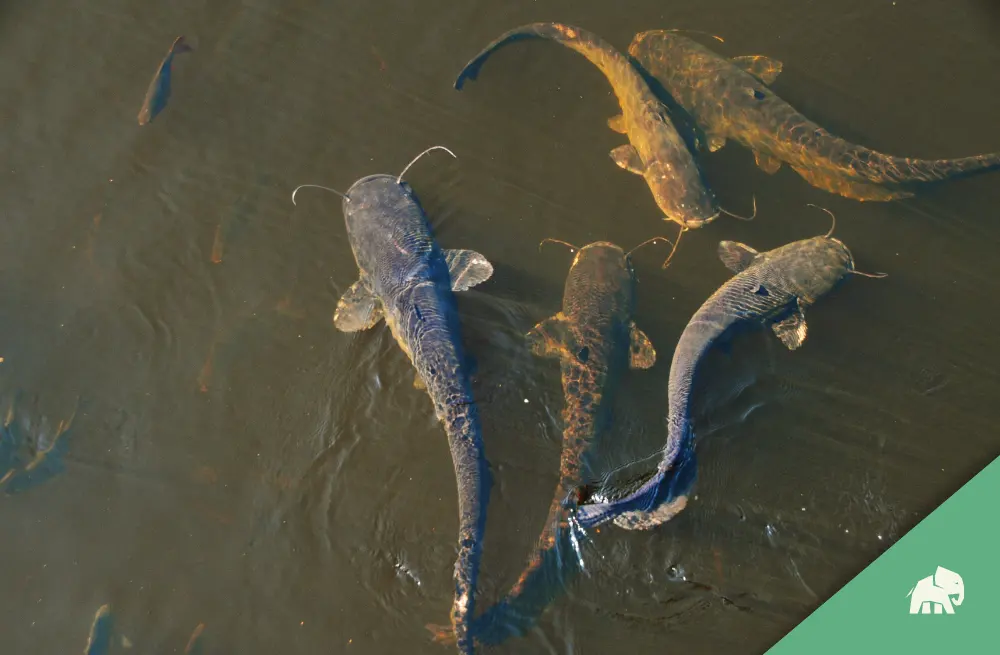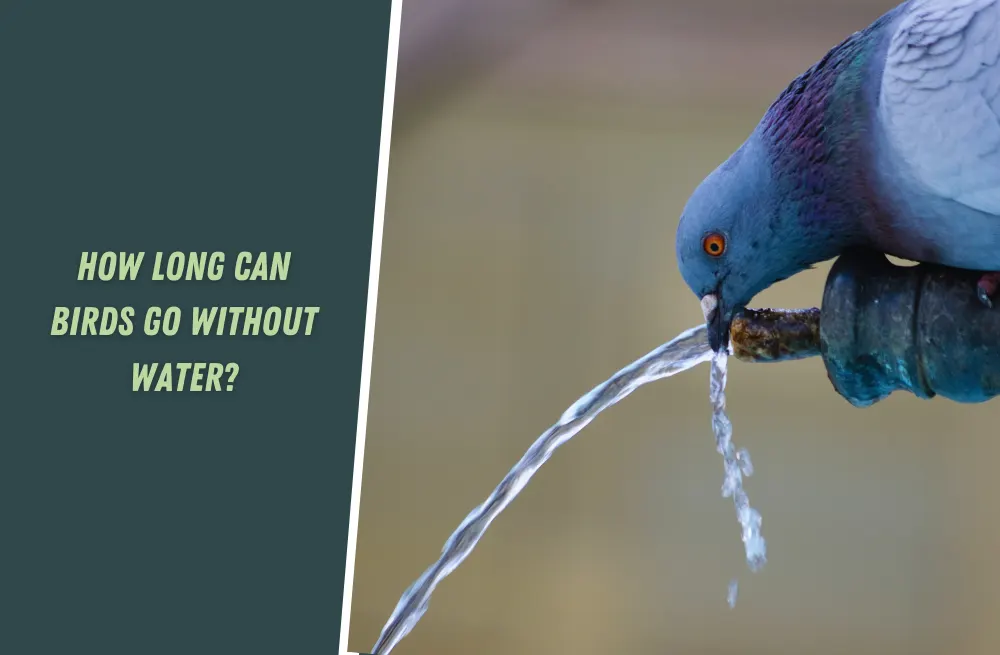Milkweed bugs are fascinating creatures that can be found all across North America. They have a unique appearance, with their striking red and black coloring and distinctive patterns.
However, it’s not just their appearance that sets them apart – milkweed bugs also have a unique life cycle that is unlike that of most insects.
Throughout this article, we will examine the four stages of a milkweed bug’s life cycle – egg, nymph, pupa, and adult – and delve into the fascinating adaptations and behaviors that enable these bugs to survive and thrive in their environments.
About the Milkweed bugs (Oncopeltus fasciatus)
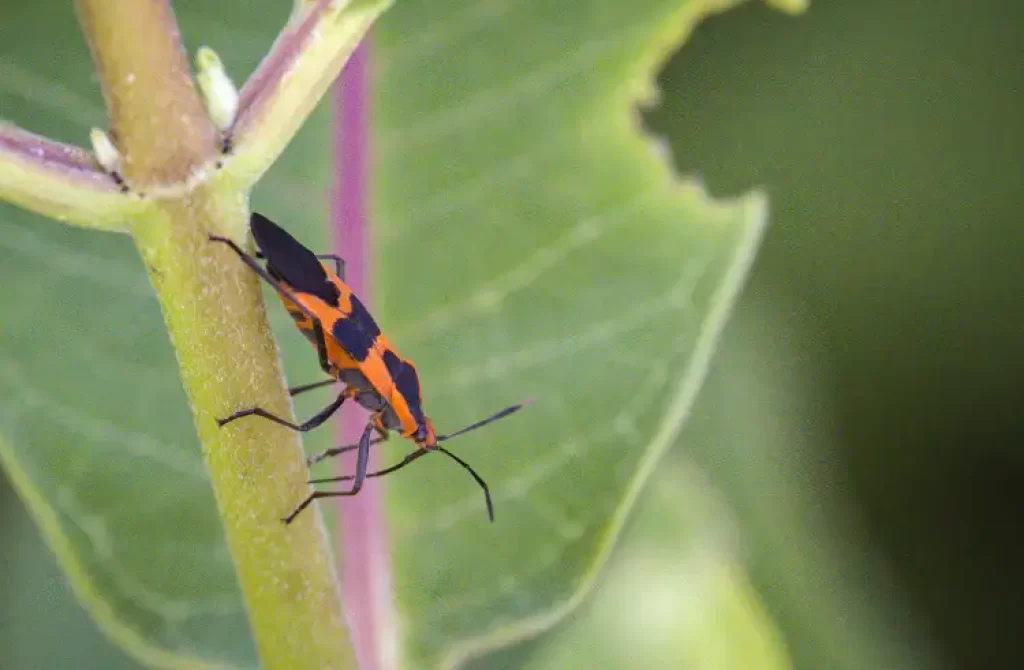
Milkweed bugs (Oncopeltus fasciatus) are small insects that are known for their bright red and black coloring. They are typically around 1 centimeter in length, with elongated bodies and a distinctive, shield-like shape.
Milkweed bugs can be found throughout North America, particularly in areas where their preferred food source, milkweed plants, grow.
Milkweed bugs are important members of their ecosystems for several reasons. They are herbivores that feed on the seeds and pods of milkweed plants, helping to regulate their populations and prevent overgrowth.
Additionally, milkweed bugs are an important food source for other species, such as birds, spiders, and other insects.
Speaking of milkweed plants, these plants play a vital role in the life cycle of milkweed bugs. Milkweed plants provide both food and habitat for milkweed bugs at different stages of their lives.
In fact, milkweed plants are the only host plants for milkweed bugs, as they lay their eggs on the undersides of milkweed leaves and the nymphs feed on the plant’s sap.
This unique relationship between milkweed bugs and milkweed plants highlights the important interdependence between species in nature.
The Four Stages of the Milkweed Bug Life Cycle
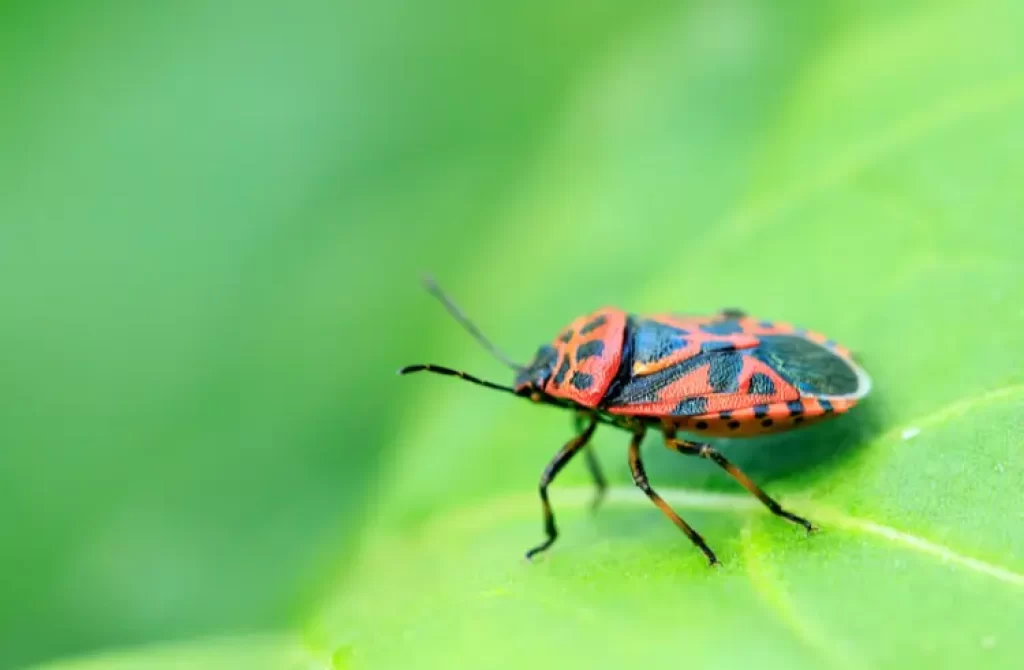
Egg – The first stage of the milkweed bug life cycle is the egg stage. Milkweed bugs lay their eggs on the undersides of milkweed leaves, typically in clusters of 10-50 eggs. The eggs are oval-shaped and about 1mm in length.
They are initially yellow or white, but turn gray as they mature. The incubation period for milkweed bug eggs is about 4-7 days.
Nymph – The second stage of the milkweed bug life cycle is the nymph stage. After hatching, the milkweed bug enters this stage, during which it undergoes several molts as it grows and develops. Nymphs resemble adults but are smaller and lack wings.
They are typically black with small patches of red or orange. The length of the nymph stage depends on temperature and food availability, but it typically lasts for 20-40 days.
Pupa – The third stage of the milkweed bug life cycle is the pupa stage. During this stage, the milkweed bug undergoes metamorphosis and transforms from a nymph to an adult.
The pupa is enclosed in a hard, brown shell called an exoskeleton. Inside the pupa, the milkweed bug’s body undergoes significant changes, such as the growth of wings and reproductive organs. The pupal stage lasts for about 6-10 days.
Adult – The final stage of the milkweed bug life cycle is the adult stage. Adult milkweed bugs are typically red and black in color, with distinctive patterns on their backs.
They have wings and can fly, and are around 1 centimeter in length. Adult milkweed bugs feed on milkweed seeds and pods, and also mate and lay eggs to start the next generation.
Milkweed Bug Life Cycle: Egg Stage
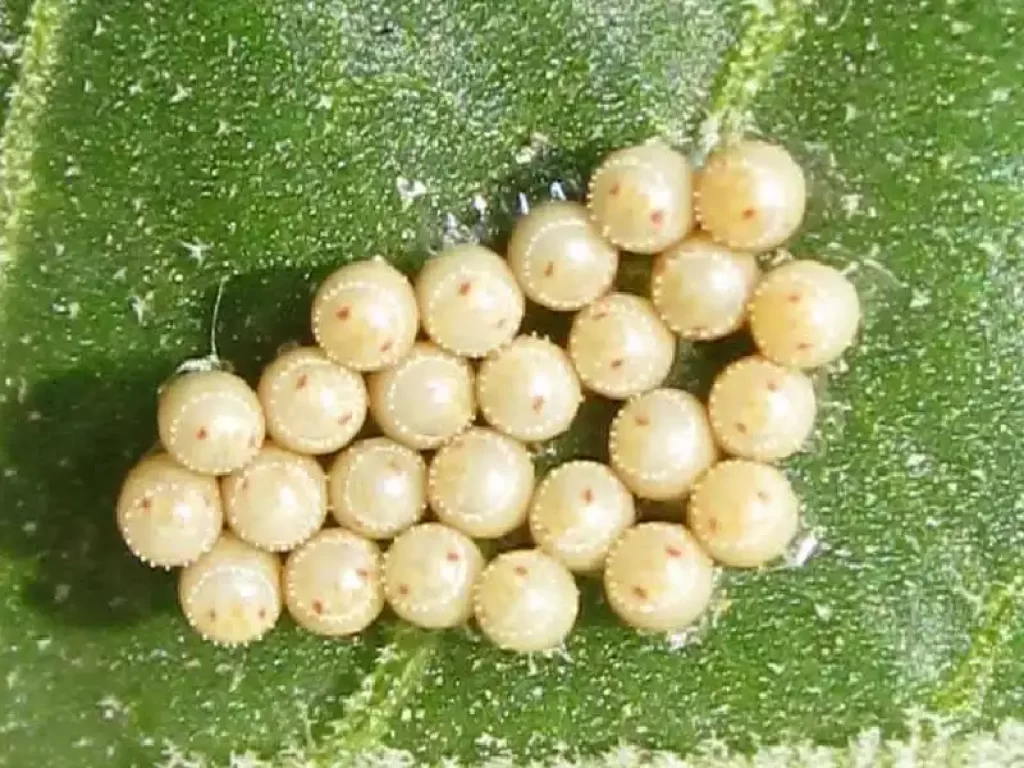
The egg stage is the first stage in the milkweed bug life cycle, and it is where the journey begins for these fascinating insects. Let’s take a closer look at what happens during the egg stage:
Location and Quantity of Eggs
Milkweed bugs lay their eggs on the undersides of milkweed leaves, typically in clusters of 10-50 eggs. The eggs are laid in a single layer and are usually attached to the leaf with a glue-like substance that hardens and secures the eggs in place.
Incubation Period
The incubation period for milkweed bug eggs is about 4-7 days. During this time, the eggs are vulnerable to predators and environmental factors, such as temperature and humidity, that can affect their development.
Hatching Process
As the eggs mature, they darken in color and become gray or black. Nymphs start to develop within the eggs, and after about a week, they begin to hatch. The emerging nymphs break out of the eggshell by splitting it with their mandibles.
The newborn nymphs are small and have a white, soft body. They quickly darken and harden as they begin to feed and grow.
Physical Characteristics of the Eggs
Milkweed bug eggs are oval-shaped and about 1mm in length. They are initially yellow or white, but turn gray as they mature.
The surface of the egg is covered with a complex network of ridges and valleys that give it a rough texture. These ridges and valleys may help to protect the eggs from predators and prevent them from drying out.
The egg stage is a critical part of the milkweed bug life cycle. During this stage, milkweed bugs lay their eggs on milkweed plants, and the eggs undergo an incubation period before hatching into nymphs.
Milkweed bug eggs are small, oval-shaped, and covered in ridges and valleys, which help to protect them from predators and prevent them from drying out.
Milkweed Bug Life Cycle: Nymph Stage
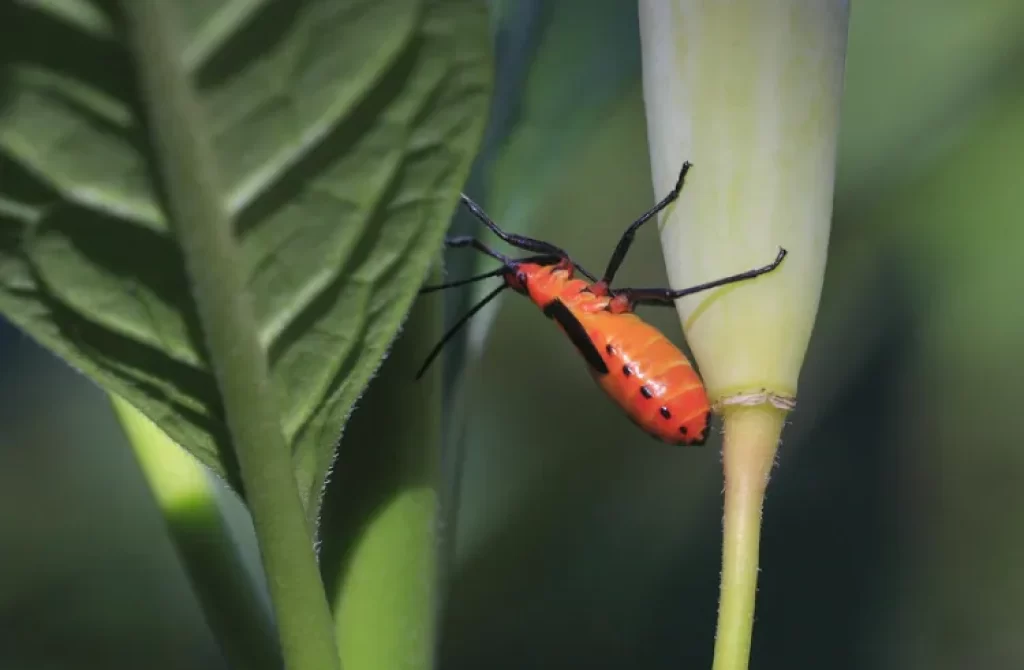
The nymph stage is the second stage of the milkweed bug life cycle, and it is characterized by a series of molts as the insects grow and develop. Let’s take a closer look at what happens during the nymph stage:
Different In-stars
There are usually five in-stars (stages of development) during the nymph stage of the milkweed bug life cycle.
Each instar is marked by a molt, during which the old exoskeleton is shed and a new, larger one is formed. As the milkweed bug grows and develops, it molts several times, shedding its skin and growing a new, larger exoskeleton.
Feeding and Growth
During each instar, the milkweed bug feeds and grows, taking in nutrients from its environment to fuel its development. The first instar nymphs are tiny and feed on milkweed leaves and stems.
As they grow and molt into second, third, and fourth in-stars, they continue to feed on milkweed but become larger and more active. By the fifth instar, the nymphs are nearly as large as adults and have developed wingspots on their backs.
Molting and Change
Each molt marks a significant change in the milkweed bug’s development. After molting, the nymphs emerge with a new, larger exoskeleton that provides more space for growth and development.
The newly molted nymphs are initially soft and vulnerable, but their exoskeletons harden quickly, protecting them from predators and the environment.
The nymph stage is a critical part of the milkweed bug life cycle, during which the insects undergo a series of molts and develop into their adult form.
Each instar is marked by a molt and a change in the milkweed bug’s development, as it grows and feeds on milkweed plants.
By the end of the nymph stage, the insects are nearly as large as adults and have developed wingspots on their backs.
Milkweed Bug Life Cycle: Adult Stage
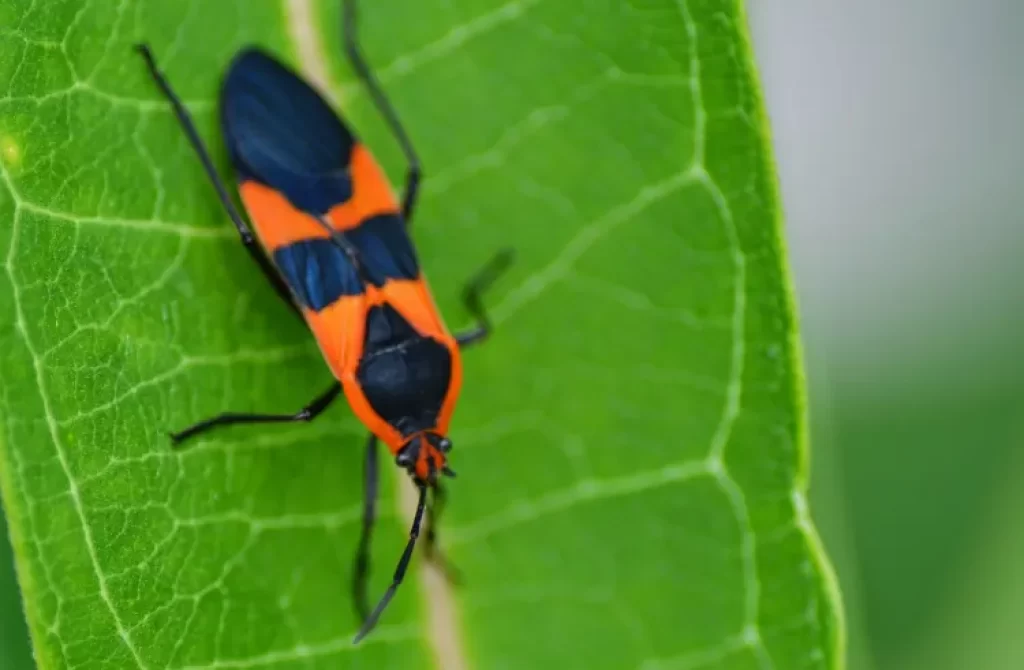
The adult stage is the final stage of the milkweed bug life cycle, and it is marked by the emergence of fully-formed adult insects that are capable of reproducing. Let’s take a closer look at what happens during the adult stage:
Physical Characteristics
Adult milkweed bugs are easily recognized by their distinctive black and orange coloring, which acts as a warning to predators that they are toxic.
They have a flat, shield-shaped body that is about 1 centimeter in length, and their wingspan is slightly larger than their body. Adult males and females look similar, but females are slightly larger and have a rounder abdomen.
Feeding and Reproduction
During the adult stage, milkweed bugs feed primarily on the seeds of the milkweed plant. They use their mouthparts to pierce the seed pods and suck out the nutritious seeds inside. Adult milkweed bugs also mate and lay eggs during this stage.
After mating, females lay their eggs on milkweed plants, usually in clusters of 10-20. The eggs hatch into nymphs after a few days, and the life cycle starts over again.
Life Span and Death
Adult milkweed bugs typically live for several weeks to a few months, depending on environmental factors such as temperature and food availability. During this time, they mate, lay eggs, and feed on milkweed seeds. Eventually, the adults die, and their bodies decompose, returning nutrients to the ecosystem.
The adult stage is the final stage of the milkweed bug life cycle, during which the insects emerge as fully-formed adults that are capable of feeding, mating, and reproducing.
Adult milkweed bugs are easily recognized by their distinctive black and orange coloring, and they primarily feed on the seeds of the milkweed plant. They mate and lay eggs, and after a few weeks to a few months, they die and return nutrients to the ecosystem.
Milkweed Bug Life Cycle and the Environment
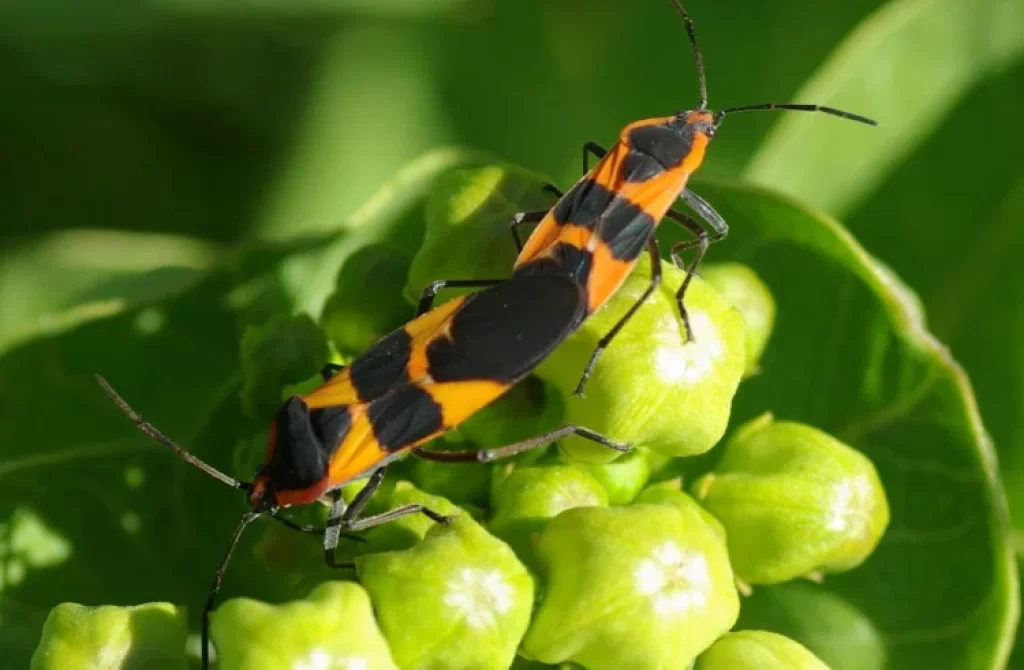
Milkweed bugs are an important part of their ecosystem and play a crucial role in pollination and seed dispersal. However, their life cycle is heavily influenced by environmental factors such as temperature, humidity, and food availability.
Environmental Factors
The development of milkweed bugs is heavily influenced by temperature and humidity. Higher temperatures generally result in faster development, while lower temperatures result in slower development.
Similarly, high humidity can promote the growth and survival of milkweed bug eggs and nymphs, while low humidity can dry them out and make them more susceptible to predators and parasites.
Food availability is also a critical factor in milkweed bug development, as they rely heavily on the milkweed plant for their survival.
Interactions with Other Species
Milkweed bugs interact with a variety of other species in their ecosystem, including predators, parasites, and symbiotic partners. They are toxic to many predators, which helps protect them from being eaten.
However, some predators have evolved adaptations that allow them to feed on milkweed bugs without being harmed, such as the assassin bug. Parasites, such as wasps and flies, lay their eggs on or inside milkweed bugs, which eventually kill them.
Milkweed bugs also have a symbiotic relationship with bacteria that live in their guts, which help them digest the tough milkweed plant material.
What is the range of the milkweed bug?
The range of the milkweed bug (Oncopeltus fasciatus) covers much of North America, including the United States, Canada, and Mexico. They are commonly found in fields and gardens where milkweed plants grow, which is the primary food source for both adult and nymph milkweed bugs.
However, they can also be found in other habitats where plants in the same family as milkweed (Asclepias) are present.
The exact range of the milkweed bug can vary depending on factors such as habitat availability and environmental conditions, but it is generally considered to be a widespread and common species throughout much of North America.
How long is the life cycle of the milkweed bug?
The life cycle of the milkweed bug typically takes around 4-5 weeks to complete, but this can vary depending on factors such as temperature and humidity.
During the egg stage, which typically lasts for 3-5 days, the eggs are laid on milkweed plants or other plants in the same family (Asclepias).
The nymph stage has five instars and lasts for approximately 2-3 weeks, during which time the nymphs go through a series of molts and grow in size.
Finally, the adult stage lasts for around 2-3 weeks, during which time the milkweed bugs mate and lay eggs for the next generation.
The length of the milkweed bug life cycle can be influenced by environmental conditions such as temperature and humidity, with warmer temperatures generally leading to faster development and shorter life cycles, while cooler temperatures can slow down development and extend the overall length of the life cycle.
Conclusion
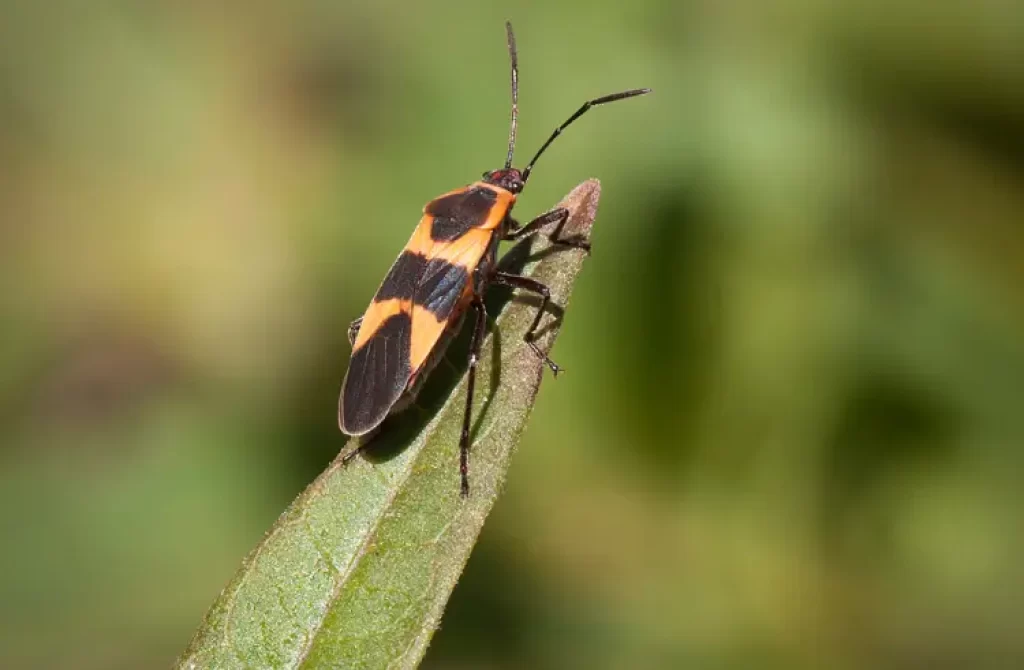
Milkweed bugs are fascinating creatures that play an important role in their ecosystem. From their distinctive red and black coloration to their unique life cycle, there is much to learn about these insects.
By understanding their behavior and interactions with the environment, we can better appreciate their place in the natural world and work to protect them and their habitats.
Additional Resources
If you are interested in learning more about milkweed bugs, here are some additional resources you may find helpful:
- Common name: Milkweed Assassin Bug Scientific name: Zelus longipes Linnaeus (Insecta: Hemiptera: Reduviidae) – This article provides an overview of Milkweed bug biology.
- Large milkweed bug nymph – from the University of Minnesota Extension
- Large milkweed bug – Wikipedia page with information about this species
- Common Milkweed Insects – from the University of Wisconsin-Madison
By utilizing these resources, you can expand your knowledge of milkweed bugs and gain a deeper appreciation for these fascinating insects.
Frequently asked questions (FAQ) about milkweed bugs
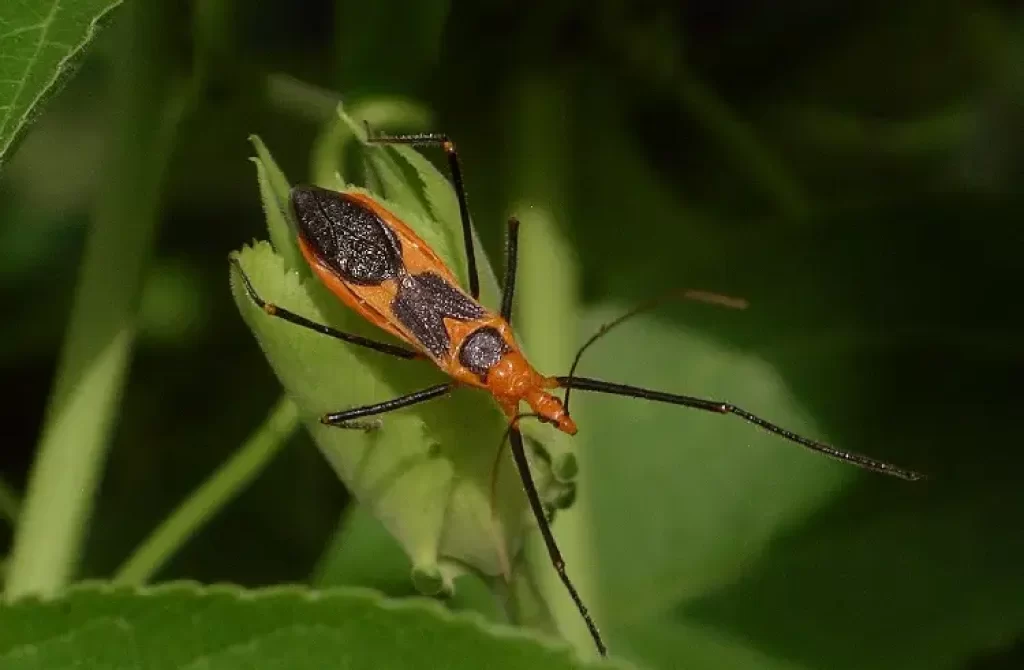
Q: What are milkweed bugs?
A: Milkweed bugs are insects that belong to the family Lygaeidae. They are commonly found on milkweed plants and feed on the sap of these plants. They are named after their preferred food source and are known for their distinctive red and black coloration.
Q: What is the life cycle of milkweed bugs?
A: The life cycle of milkweed bugs typically lasts around 4-5 weeks, with eggs hatching into nymphs, which then go through five instars before reaching adulthood. During the adult stage, the bugs mate and lay eggs, starting the next generation.
Q: What do milkweed bugs eat?
A: Milkweed bugs primarily feed on the sap of milkweed plants. However, they may also feed on other plants in the same family (Asclepias) and can sometimes be found on other types of vegetation.
Q: Why are milkweed bugs important?
A: Milkweed bugs are an important part of their ecosystem. They help to pollinate milkweed plants and are also a food source for a variety of predators, including birds and other insects.
Q: Do milkweed bugs bite?
A: Milkweed bugs do have the ability to bite, but they are not known to be aggressive towards humans and generally only bite if they feel threatened or handled roughly.
Q: How can I attract milkweed bugs to my garden?
A: The best way to attract milkweed bugs to your garden is to plant milkweed or other plants in the Asclepias family. Providing a food source for the bugs can encourage them to visit and potentially even take up residence in your garden.
Q: Are milkweed bugs harmful to humans?
A: 😂 This question got me actually laughing! The answer is NO! Milkweed bugs are not harmful to humans and do not pose any significant health risks. While they may bite if provoked, their bites are generally not dangerous and do not require medical attention.


